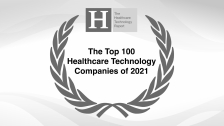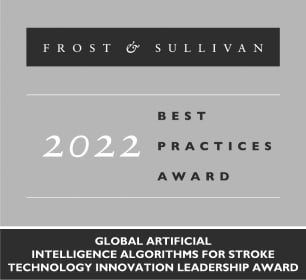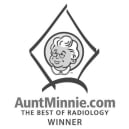At RapidAI, we understand that technology is just one part of any successful patient outcome. From the person who picks up the phone to call 9-1-1, to the first responders, doctors and other healthcare professionals providing care, there are many heroes in each story. Here, we spotlight these incredible individuals who are saving and changing lives in our Rapid Hero Stories.
It’s estimated that the average stroke patient loses 1.9 million neurons every minute. Until recently, standard practice dictated that if a stroke occurred more than six hours prior to diagnosis, treatment to mitigate or even reverse the damage was not recommended because too much brain tissue would have already been lost. And that effectively sentenced thousands of unlucky stroke patients and their families to a life of disability and hardship—if they survived at all. But now, after the publication of the DAWN and DEFUSE 3 landmark trials, pioneering clinicians outside the US are helping to expand the treatment window for stroke in developing countries, and they’re using RapidAI technology to do it. One of those pioneers is Dr. Octavio Pontes-Neto, a distinguished Brazilian stroke expert.
A recent stroke case illustrates the restorative power of Pontes-Neto’s work. Recently, a 65-year-old man was brought via ambulance to the Ribeirão Preto Clinics Hospital, a teaching hospital of the University of São Paulo. He was aphasic and hemiparetic on his right side with facial droop, having had a massive stroke. The patient had a history of hypertension and arteriolosclerosis and had been on anticoagulants for some time. He hadn’t tolerated the medication very well, so he had stopped taking it. While that may have contributed to his stroke, it also allowed Pontes-Neto and his team to operate on him to remove the clot.
The most difficult stroke cases are those in which the time of onset is difficult or impossible to determine, like this one. As near as anyone could determine, he was last seen well at 10:30 am by his wife, took a nap after lunch, and had a stroke sometime while he was sleeping. Upon waking, he was confused, had a facial droop, and was unable to speak or move his right arm or leg. His family called an ambulance, and when he arrived at the emergency room, there were three other stroke patients ahead of him. That meant he would likely be outside the potentially curative six-hour window for treatment. Pontes-Neto’s team worked quickly to get a CT scan of the patient—and the news wasn’t good. He had not improved during transport and had a National Institute of Health Stroke Scale (NIHSS) score of 19, indicating a massive stroke. Using a CTA scan, the stroke team was able to identify the occlusion at the very beginning of the right middle cerebral artery, the main artery carrying blood to the left side of the brain.
Being outside the six-hour treatment window, the patient might not have been treated at all if he had his stroke three years ago. Had that been the case, he would have had an 80% chance of dying, according to Pontes-Neto. But this is now. Pontes-Neto and his team ran another CT scan and used the cerebral blood flow (CBF) map generated by Rapid CTP to show exactly how much of the patient’s brain was damaged and likely already dead and how much was at risk. Doctors also used the Rapid CTP Tmax map to understand how long it took for blood to flow to various parts of the brain. For healthy tissue, that number needs to be under six seconds. The other Rapid numbers revealing how much of the patient's brain could be saved were surprisingly good, including a mismatch ratio of 17 (the minimum is 1.8). One final test showing his blood stream was free of anticoagulants confirmed the patient could go into surgery for a mechanical thrombectomy to remove the clot blocking blood flow to his brain.
The patient was door-to-puncture in 63 minutes and made what Pontes-Neto called “a dramatic recovery.” Shortly after surgery, his perfusion score showed he was in the clear, and he was able to move his right arm and leg while still on the operating table. His NIHSS score dropped to 9, and when he left the hospital a few days later, it was a 6. His aphasia had improved, he was able to walk right away, and he said he felt good. A follow-up consultation showed him functioning very well and grateful to be alive.
“The advanced neuroimaging of RapidAI has been very helpful in giving us the confidence to treat patients outside of the six-hour window, because it's a hard call, right? It's even harder to do it without neuroimaging. But now, we have scientific evidence from the Rapid software on the perfusion. And that gives us the evidence we need to treat patients outside of the 6- to 8-hour window or wake-up stroke patients where we have no idea of the time of onset. For these patients and for us, RapidAI has been a game-changer.”
RapidAI gives stroke teams and their patients more of what they desperately need: time. By notifying the entire stroke care team—doctors, emergency personnel and logistics—at the earliest possible moment and giving them the patient images and information they need to make the best possible decisions, they can save lives.
“The advanced neuroimaging of RapidAI has been very helpful in giving us the confidence to treat patients outside of the six-hour window, because it's a hard call, right? It's even harder to do it without neuroimaging. But now, we have scientific evidence from the Rapid software on the perfusion. And that gives us the evidence we need to treat patients outside of the 6- to 8-hour window or wake-up stroke patients where we have no idea of the time of onset. For these patients and for us, RapidAI has been a game-changer.”
Rapid CTP allowed Dr. Octavio Pontes-Neto and his team to quickly compare the patient’s brain regions with severe reductions in cerebral blood flow (CBF) in pink and regions with significant hypoperfusion in green. This information helped Pontes-Neto determine there were significant salvageable areas and that the patient would benefit from a mechanical thrombectomy to remove the clot interrupting blood flow to his brain.
Ribeirão Preto Clinics Hospital of the University of São Paulo is a large, certified comprehensive stroke center (CSC) and emergency hospital located in the city center with all of the constraints and challenges that come with operating in a developing country.


